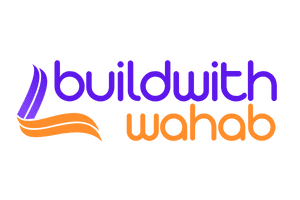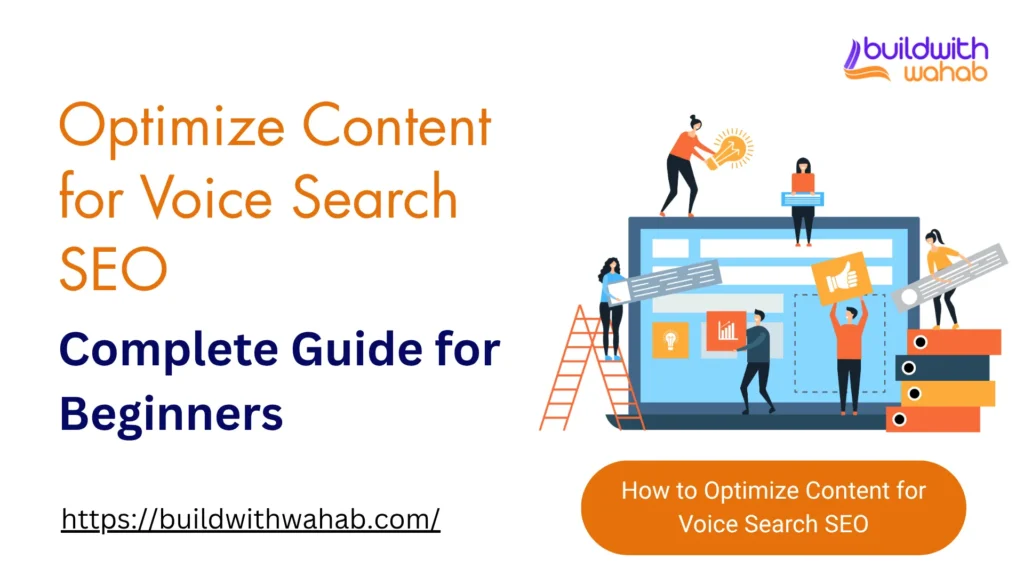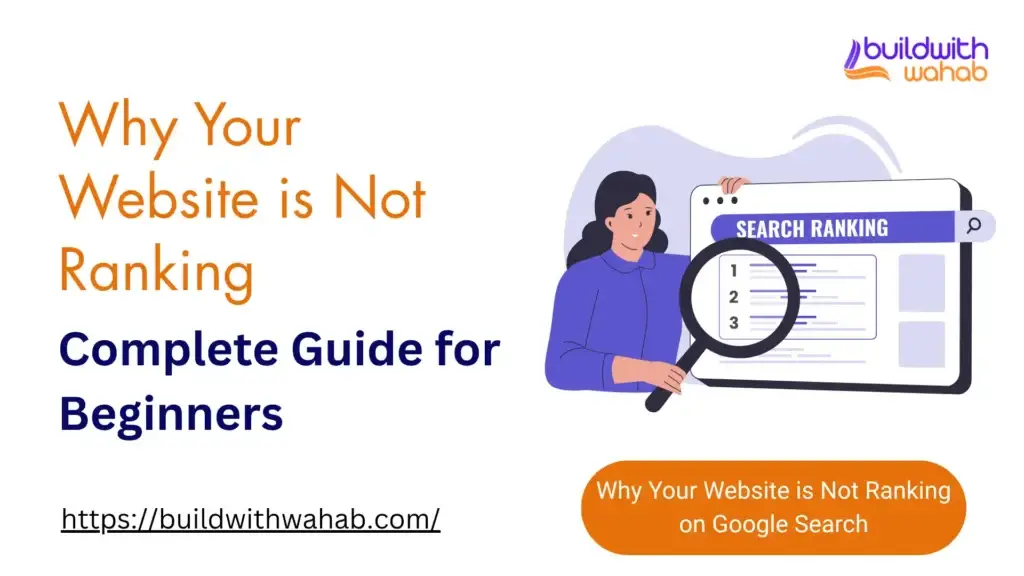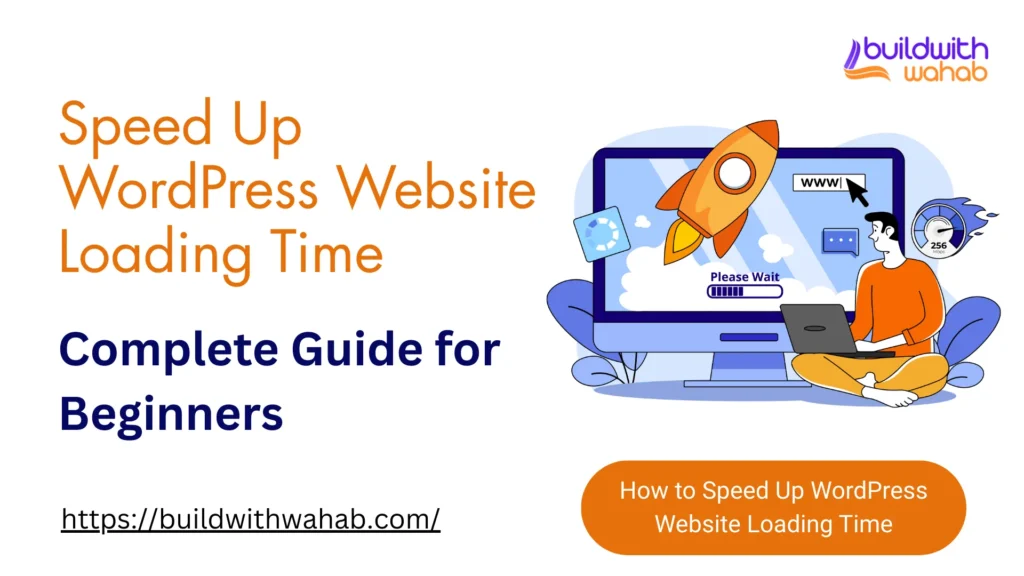Your Step-by-Step Guide to Online Visibility
In today’s hyper-competitive digital landscape, SEO (Search Engine Optimization) isn’t just an option; it’s a critical imperative for any website aiming to thrive. It’s the invisible force that connects your valuable content and services with the audience actively searching for them. Without a robust SEO strategy, even the most beautifully designed website and compelling content can languish in obscurity. SEO ensures your digital presence is not only visible but also relevant and authoritative in the eyes of search engines like Google. This translates into higher rankings, attracting quality organic traffic, building crucial trust with your audience, and ultimately, converting curious visitors into loyal customers. Whether your focus is local dominance or global reach, a well-executed SEO checklist is your roadmap to sustainable online growth and a powerful return on your digital investment.
1. Technical SEO
Technical SEO forms the bedrock of a healthy website, ensuring search engines can effectively crawl, index, and understand your content. Without a strong technical foundation, even the best content can struggle to rank. This section of the SEO checklist focuses on the behind-the-scenes elements that impact your site’s performance and visibility.
Ensure website is mobile-friendly (responsive design). With Google’s mobile-first indexing, a responsive design that adapts seamlessly to all devices is no longer optional. It provides a superior user experience, reduces bounce rates, and is a significant Google ranking factor, ensuring your site is accessible to everyone, everywhere.
Optimize site speed (Core Web Vitals). Slow loading times frustrate users and negatively impact your search rankings. Focus on improving Core Web Vitals metrics through image optimization, leveraging browser caching, and minimizing code. Tools like GTmetrix and Google PageSpeed Insights can help identify areas for improvement, enhancing user engagement and crawlability.
Implement HTTPS (SSL certificate). An SSL certificate encrypts data exchanged between your website and users, ensuring security and privacy. Google explicitly uses HTTPS as a ranking signal, and browsers display warnings for non-secure sites, eroding user trust. This is a fundamental aspect of any comprehensive SEO checklist.
Fix broken links & redirects. Broken links (404 errors) create a frustrating user experience and signal neglect to search engines, potentially hurting your crawl budget and rankings. Regularly audit your site for broken links and implement proper 301 redirects for moved or deleted pages to preserve link equity and guide users and crawlers correctly.
Create and submit an XML Sitemap. An XML sitemap acts as a map for search engine spiders, guiding them to all important pages on your site. This helps search engines discover and index your content more efficiently, especially for large or newly launched websites. Submit your sitemap through Google Search Console for better crawl management.
Configure robots.txt. The robots.txt file guides search engine bots on which pages or sections of your site they should or shouldn’t crawl. This is crucial for preventing indexing of duplicate content, private areas, or development pages, ensuring crawl budget is focused on valuable content.
Implement Schema Markup. Schema markup (structured data) helps search engines understand the context of your content, leading to rich snippets in search results. These visually appealing results, such as star ratings or product prices, can significantly increase your click-through rate (CTR) and provide more prominent visibility in search engine results pages (SERPs).
2. On-Page SEO
On-page SEO involves optimizing individual web pages to rank higher and earn more relevant traffic in search engines. This part of the SEO checklist focuses on elements directly within your control on your website’s pages.
Create keyword-rich, SEO-friendly URLs. URLs should be descriptive, concise, and include your target keywords where natural. This makes them easier for both users and search engines to understand the page’s content, improving crawlability and user experience.
Write unique Meta Titles & Descriptions. These are the first impressions users have of your page in the SERPs. Craft compelling, keyword-inclusive meta titles (under 60 characters) and meta descriptions (around 150-160 characters) to accurately reflect your content and encourage higher click-through rates. This is a vital component of any SEO checklist.
Use proper H1, H2, H3 tags. Heading tags (H1, H2, H3, etc.) structure your content, making it easier for readers to scan and for search engines to understand the hierarchy and main topics of your page. Your H1 should typically contain your main keyword and accurately reflect the page’s primary theme.
Optimize Homepage with target keywords. Your homepage is often your site’s most authoritative page. Ensure it’s optimized with your primary target keywords, clearly communicating your core services or value proposition. This helps establish your site’s overall thematic relevance.
Implement internal linking. Strategically link related pages within your website to help users navigate, distribute “link juice” (authority) across your site, and signal to search engines the importance of certain pages. A robust internal linking structure enhances user experience and crawlability.
Optimize images (alt text, compression). Images can significantly impact page load times. Compress images without sacrificing quality and include descriptive alt text. Alt text provides context for search engines and visually impaired users, improving accessibility and offering another opportunity for keyword inclusion.
Highlight Key Services Clearly. Ensure your core services are prominently displayed and easily accessible on your website. This not only aids user navigation but also signals to search engines the main offerings and areas of expertise your website covers.
3. Content Optimization
Content is king, and optimizing it for search engines means creating high-quality, valuable, and relevant material that naturally incorporates your target keywords. This section of the SEO checklist focuses on the strategic creation and refinement of your written content.
Publish high-quality, valuable blog posts regularly. Consistent creation of informative and engaging blog content establishes your authority, keeps your website fresh, and provides numerous opportunities to target long-tail keywords and attract organic traffic. Quality content is paramount for website optimization.
Create targeted service-based landing pages. Each of your services should have its own dedicated landing page, meticulously optimized for specific keywords related to that service. This allows for precise targeting and improves your chances of ranking for relevant user queries.
Ensure natural keyword usage. While keyword density is important (1% to 1.5% for SEO Checklist), forcing keywords into your content can harm readability and lead to keyword stuffing penalties. Integrate keywords naturally within your text, headings, and introductory paragraphs to maintain a helpful and engaging tone.
Include FAQs (Frequently Asked Questions). FAQs directly address common user queries, providing valuable information and an excellent opportunity to target long-tail keywords. They can also qualify for featured snippets, offering enhanced visibility in search results.
Prioritize readability. Use short sentences, clear language, and formatting elements like bullet points, numbered lists, and subheadings to break up text. This improves user experience, reduces bounce rates, and makes your content more digestible for a wider audience.
4. Local SEO Setup
For businesses serving a specific geographical area, local SEO is paramount. This part of the SEO checklist helps you capture local search traffic and connect with nearby customers.
Optimize your Google Business Profile. Your Google Business Profile (formerly Google My Business) is crucial for local search visibility, appearing in Google Maps and local search packs. Ensure all information is accurate, complete, and regularly updated with photos, services, and business hours.
Maintain consistent NAP (Name, Address, Phone). Your business’s Name, Address, and Phone number must be consistent across all online directories, social media profiles, and your website. Inconsistencies confuse search engines and erode trust with potential customers.
Target local keywords. Incorporate location-specific keywords (e.g., “SEO services in [city],” “WordPress developer [region]”) into your website content, meta descriptions, and Google Business Profile to attract local searchers.
Encourage client reviews. Positive client reviews on your Google Business Profile and other platforms significantly impact your local ranking and build social proof. Respond to all reviews, both positive and negative, to show engagement and improve your online reputation.
Implement Local Business Schema. Adding local business schema markup to your website’s code provides search engines with precise information about your business, such as address, phone number, and opening hours. This can lead to enhanced visibility in local search results.
5. Off-Page SEO
Off-page SEO refers to actions taken outside of your own website to impact your rankings within search engine results pages (SERPs). This section of the SEO checklist focuses on building authority and credibility.
Promote content on social media. While social signals aren’t direct ranking factors, social media promotion increases content visibility, drives traffic, and can lead to natural backlinks. Share your blog posts and services across relevant social platforms to expand your reach.
Build backlinks with branded anchor text. High-quality backlinks from authoritative and relevant websites are a strong signal of trust and credibility to search engines. Focus on earning links naturally, and when possible, use branded anchor text to reinforce your brand name.
Collaborate with influencers/niche blogs. Partnering with influencers or collaborating on content with relevant niche blogs can significantly boost your visibility, drive referral traffic, and earn valuable, authoritative backlinks.
6. Analytics & Reporting
Effective SEO is an ongoing process that requires constant monitoring and adjustment. This part of the SEO checklist highlights the importance of data-driven decisions.
Set up Google Analytics & Google Search Console. These free tools are indispensable. Google Analytics tracks website traffic, user behavior, and conversions, while Google Search Console provides insights into your site’s performance in search results, crawl errors, and keyword rankings.
Track keyword rankings regularly. Monitor your target keyword positions to assess the effectiveness of your website optimization efforts. This helps you identify trends, competitor movements, and areas where your strategy needs refinement.
Monitor Bounce Rate & Time on Site. High bounce rates and low time-on-site metrics can indicate poor content quality or a confusing user experience. Regularly review these metrics in Google Analytics to identify and address issues that might be deterring visitors.
Review backlink profile. Regularly audit your backlink profile using tools like Ahrefs or Semrush to identify new opportunities, disavow harmful or spammy links, and ensure the health of your link profile. A clean backlink profile is crucial for sustained Google ranking.
Track leads/form submissions. Ultimately, SEO should drive business results. Track your lead generation and form submissions to measure the direct impact of your SEO efforts on your conversion goals. This helps quantify the return on investment for your digital marketing checklist.
7. Conversion Optimization
While SEO brings traffic, conversion optimization ensures that traffic translates into desired actions. This section of the SEO checklist focuses on turning visitors into customers.
Implement clear CTAs (Call-to-Actions) on service pages. Guide your visitors toward desired actions (e.g., “Contact Us for a Free Audit,” “Request a Quote”) with prominent and persuasive call-to-action buttons or links on your service pages. Clear CTAs reduce friction and boost conversions.
Display trust signals (testimonials, certifications). Build credibility and reassurance by showcasing client testimonials, industry certifications, awards, and partner logos prominently on your website. Trust signals significantly influence a visitor’s decision to engage with your services.
Ensure form usability. Make your contact or inquiry forms simple, intuitive, and mobile-friendly. Long, complex forms can deter users and increase abandonment rates. Minimize required fields and clearly label all form elements.
Offer free audits/consultations. Providing a free SEO audit or initial consultation is an excellent way to demonstrate your expertise, build trust, and offer value upfront. This often serves as a low-barrier entry point for potential clients.
A/B Test Landing Pages/Buttons. Continuously test different versions of your landing pages, headlines, and call-to-action buttons to identify what resonates best with your audience and drives the highest conversion rates. This data-driven approach is key to improving your organic growth.
8. Ongoing SEO Maintenance & Monitoring
SEO is not a one-time task; it’s a continuous journey. This final section of the SEO checklist emphasizes the importance of consistent effort to maintain and improve your search rankings.
Perform monthly site audit for technical errors. Regularly conduct technical SEO audits to catch and fix issues like broken links, crawl errors, and sitemap problems before they negatively impact your rankings. Staying on top of technical health is vital for sustained Google ranking.
Update outdated content. Refreshing old blog posts or service pages with new information, statistics, and examples keeps your content relevant and signals to search engines that your site is actively maintained. This can significantly improve rankings and user engagement.
Check for Google algorithm updates. Google frequently updates its algorithms. Stay informed about major changes and adjust your SEO services strategy accordingly to maintain or improve your rankings.
Refresh meta tags and keywords periodically. As your services evolve or search trends change, revisit and update your meta titles, descriptions, and keyword targeting to ensure they remain relevant and competitive.
Keep track of overall SEO health. Regularly review your key SEO metrics – traffic, keyword rankings, crawl errors, and backlink profile – to get a holistic view of your site’s performance and identify areas needing attention. This is a continuous part of your digital marketing checklist.
Set up alerts for site issues. Utilize tools like Google Search Console alerts to be immediately notified of critical site issues, such as crawl errors or indexing problems, allowing for quick response and minimal impact on your rankings.
Regularly back up your website. This is a fundamental safeguard. Regular website backups protect your site from data loss due to technical errors, hacks, or accidental deletions, ensuring quick recovery and minimizing downtime, which can negatively affect your organic growth.
Final Thoughts
Implementing a comprehensive SEO checklist might seem daunting, but it’s the most effective path to achieving sustainable online visibility and organic growth. Each step outlined here is a building block towards a stronger, more authoritative digital presence. Consistently following this guide will not only help you navigate the complexities of search engine optimization but also ensure your website attracts the right audience, builds trust, and ultimately drives tangible business results. If you find any aspect of this SEO checklist overwhelming or need expert guidance to accelerate your digital growth, don’t hesitate to reach out. As an experienced SEO expert, WordPress developer, and content strategist, I’m committed to helping businesses like yours achieve their online potential. Let’s discuss how my SEO services can be tailored to your specific needs.

Dominate Search Results with Expert SEO
As your dedicated SEO Expert based in Pakistan, I provide comprehensive strategies to ensure your website ranks high where it matters most. From detailed keyword research tailored to the local market and your specific niche to meticulous on-page optimization and robust technical SEO, I lay the foundation for sustainable organic growth. I also focus on building your online authority through ethical off-page SEO and ensuring you capture valuable local traffic with targeted Local SEO strategies. My data-driven approach means you’ll see tangible improvements in your website’s visibility and traffic.
Latest from Blog
Stay ahead in the dynamic digital world with insights from our blog. We consistently publish the latest trends, actionable tips, and in-depth guides covering SEO, WordPress, content writing, and copywriting. Discover fresh strategies and expert advice designed to continuously enhance your skills and empower your online growth.
Frequently Asked Questions
What is an SEO checklist?
An SEO checklist is a list of steps. It helps your website get found better by Google. It guides you to make your site stronger.
Why do I need an SEO checklist for my website?
You need an SEO checklist to make your website powerful. It helps Google know what your site is about. This can bring many more people to your page.
How do I use an SEO checklist?
You use an SEO checklist by following each step. Every step helps your website be more friendly for search engines. It’s like a simple map for online success.
Is learning SEO hard for beginners?
Learning SEO can seem big at first. But an SEO checklist makes it easier for new people. You can learn how to help your website, step by step.
Can I do SEO for my website myself?
Yes, you can do many SEO tasks yourself. An SEO checklist gives you simple jobs to do. It helps you improve your website without needing much help.
What is On-Page SEO?
On-Page SEO is about things on your website. It means using good words and titles on your pages. It helps Google understand each page’s topic.
What is Off-Page SEO?
On-Page SEO is about things on your website. It means using good words and titles on your pages. It helps Google understand each page’s topic.
What is Technical SEO?
Technical SEO makes your website work very well. It helps search engines find and read all your pages easily. A fast and healthy website is good for SEO.
How often should I run an SEO check?
You should run an SEO check often. Maybe once a month or every few months. This helps your website stay updated and strong in searches.
What tools help with an SEO checklist?
Many tools can help with your SEO checklist. Google has free tools to see how your site is doing. Other tools help you find good keywords for your content.



